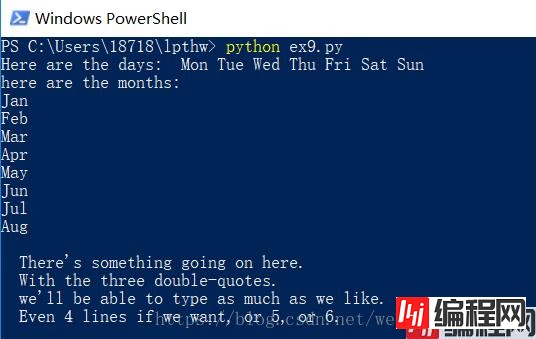Python 官方文档:入门教程 => 点击学习
目录打印类的所有属性和方法python中更多种类的打印1.print("." * 10) 是输出10个 "." 2.用了一个自定义的
利用dir(obj)方法获得obj对象的所有属性和方法名,返回一个list。
for item in dir(top_k_metergroup): #top_k_metergroup是某类的一个实例化对象
print(item)__class__
__delattr__
__dict__
__dir__
__doc__
__eq__
__format__
__ge__
__getattribute__
__getitem__
__gt__
__hash__
__init__
__init_subclass__
__le__
__lt__
__module__
__ne__
__new__
__reduce__
__reduce_ex__
__repr__
__setattr__
__sizeof__
__str__
__subclasshook__
__weakref__
_aggregate_metadata_attribute
_check_kwargs_for_full_results_and_sections
_collect_stats_on_all_meters
_convert_physical_quantity_and_ac_type_to_cols
_energy_per_meter_with_remainder
_meter_generators
_plot_area
_plot_energy_bar
_plot_sankey
_plot_separate_lines
_prep_kwargs_for_sample_period_and_resample
_replace_none_with_meter_timeframe
_set_sample_period
activation_series
activity_histogram
all_meters
appliances
available_ac_types
available_physical_quantities
available_power_ac_types
average_energy_per_period
building
call_method_on_all_meters
clear_cache
contains_meters_from_multiple_buildings
correlation
correlation_of_sum_of_submeters_with_mains
dataframe_of_meters
dataset
describe
disabled_meters
dominant_appliance
dominant_appliances
draw_wiring_graph
dropout_rate
energy_per_meter
entropy
entropy_per_meter
fraction_per_meter
from_list
from_other_metergroup
get_activations
get_labels
get_timeframe
Good_sections
groupby
identifier
import_metadata
instance
is_site_meter
label
load
load_series
mains
matches
matches_appliances
meters
meters_directly_downstream_of_mains
min_off_duration
min_on_duration
mutual_information
name
nested_metergroups
on_power_threshold
pairwise
pairwise_correlation
pairwise_mutual_information
plot
plot_activity_histogram
plot_autocorrelation
plot_good_sections
plot_lag
plot_multiple
plot_power_histogram
plot_spectrum
plot_when_on
power_series
power_series_all_data
proportion_of_energy
proportion_of_energy_submetered
proportion_of_upstream
proportion_of_upstream_total_per_meter
sample_period
select
select_top_k
select_using_appliances
simultaneous_switches
sort_meters
submeters
switch_times
total_energy
train_test_split
uNIOn
upstream_meter
uptime
use_alternative_mains
values_for_appliance_metadata_key
vampire_power
when_on
wiring_graph把每个字母相加输出就可以得到相应的字符串。
print("Mary had a little lamb.")
print("Its fleece was white as {}." .format('snow')) #将snow放入字符串的相应位置
print("And everywhere that Mary went.")
print("." * 10) # what'd that do?
end1 = "C"
end2 = "h"
end3 = "e"
end4 = "e"
end5 = "s"
end6 = "e"
end7 = "B"
end8 = "u"
end9 = "r"
end10 = "g"
end11 = "e"
end12 = "r"
# watch that comma at the end. try removing it to see what happens
print(end1 + end2 + end3 + end4 + end5 + end6, end = ' ' ) # end = ' ' 为连接前后的成分,使其不换行
print(end7 + end8 + end9 + end10 + end11 + end12)运行结果:

其作用是:
<1>.取第1行定义的 formatter 字符串。
<2>.调用它的 format 函数,这相当于告诉它执行一个叫 format 的命令行命令。
<3>.给 format 传递4个参数,这些参数和 formatter 变量中的{}匹配,相当于将参数传递给了 format 这个命令。
<4>.在 formatter 上调用 format的结果是一个新字符串,其中的{}被4个变量替换掉了,这就是 print 现在打印出的结果。
formatter="{} {} {} {}"
print(formatter.format(1,2,3,4))
print(formatter.format("one","two","three","four"))
print(formatter.format(True,False,False,True))
print(formatter.format(formatter,formatter,formatter,formatter))
print(formatter.format(
"Try your",
"Own text here",
"Maybe a poem",
"or a song about fear"
))运行结果:

“\n” 是换行符。
# Here's some new strange stuff, remember type it exactlyself.
days = "Mon Tue Wed Thu Fri Sat Sun"
months = "\nJan\nFeb\nMar\nApr\nMay\nJun\nJul\nAug"
print("Here are the days: ", days)
print("here are the months: ", months)
print("""
There's something going on here.
With the three double-quotes.
we'll be able to type as much as we like.
Even 4 lines if we want, or 5, or 6.
""")运行结果:

以上为个人经验,希望能给大家一个参考,也希望大家多多支持编程网。
--结束END--
本文标题: python实现打印类的所有属性和方法
本文链接: https://lsjlt.com/news/118154.html(转载时请注明来源链接)
有问题或投稿请发送至: 邮箱/279061341@qq.com QQ/279061341
2024-03-01
2024-03-01
2024-03-01
2024-02-29
2024-02-29
2024-02-29
2024-02-29
2024-02-29
2024-02-29
2024-02-29
回答
回答
回答
回答
回答
回答
回答
回答
回答
回答
0